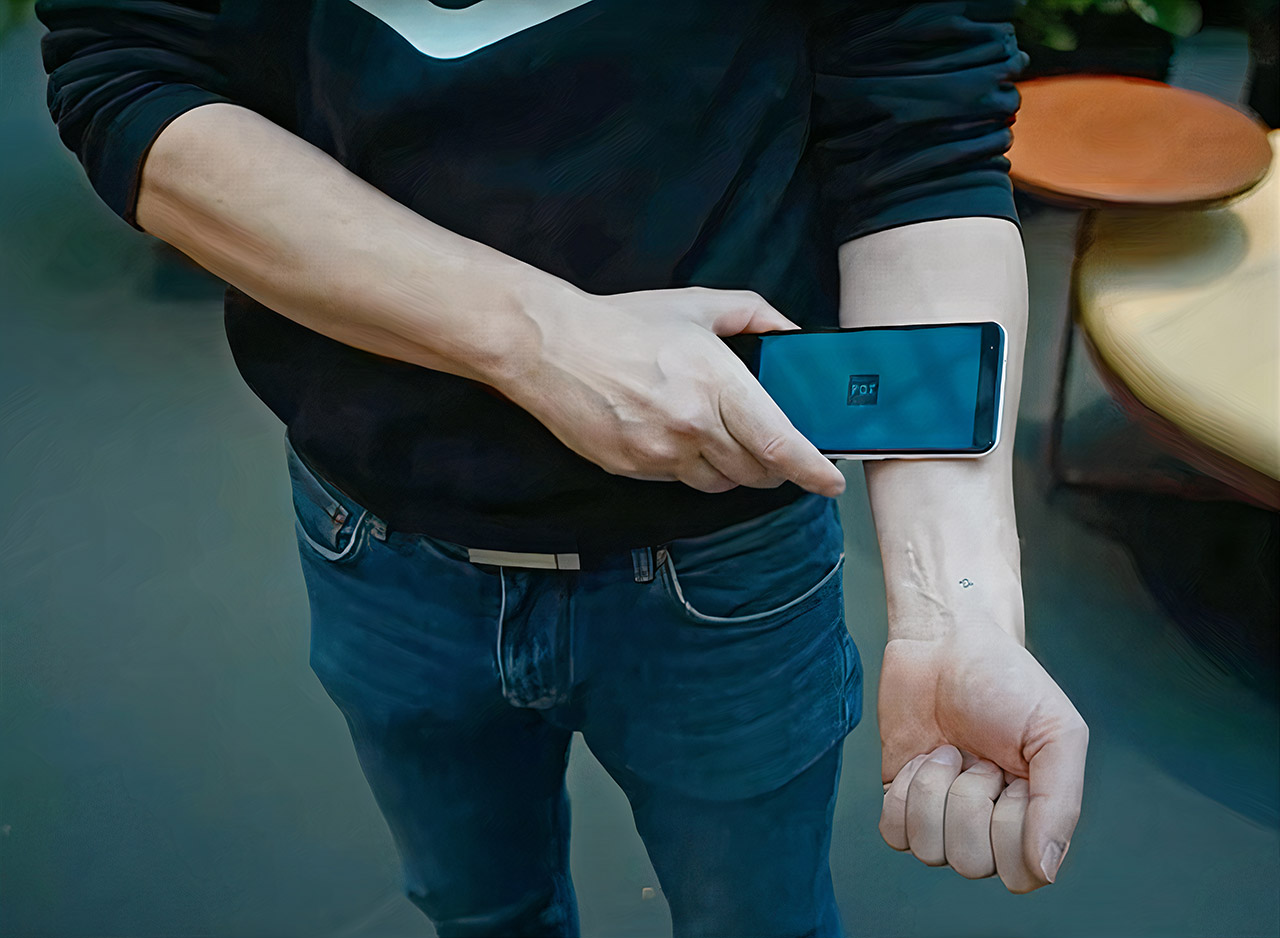Taking advantage of the same technology used for contactless payments, a company based in Sweden has developed a microchip – placed under the skin in either the arm or hand – that can store information relating to an individual’s vaccination status. The firm’s Chief Distribution Officer praised the accessibility and convenience of the implant, as it removes the need to carry specific documents or digital QR codes. The Mail has more.
Epicentre, a Stockholm-based start-up, unveiled a new way of carrying around a Covid vaccine passport – in a microchip implanted under your skin.
The implant can be read by any device using the near-field communication (NFC) protocol – technology used for contactless payments and keyless entry systems.
In a video shared by Epicentre, Hannes Sjöblad, Chief Distribution Officer, has the chip in his arm and simply waves a smartphone over it to pull up his vaccination status.
“Implants are very versatile technology that can be used for many different things, and right now it is very convenient to have COVID passport always accessible on your implant,” he said in a statement…
Many venues, restaurants, bars, concert halls and museums, across the U.S. are requiring visitors present their vaccination status in order to enter the building.
Epicentre wants to make presenting this information as easy as possible.
“In case your phone runs out of battery, it’s always accessible to you. So of course, that’s how we use this technology today, next year we are going to use it for something else,” said Sjöblad.
The microchip sits directly beneath the skin, either in the arm or between the thumb and forefinger.
According to Sjöblad, the procedure is “completely reversible” and does not require a special phone app.
Worth reading in full.











To join in with the discussion please make a donation to The Daily Sceptic.
Profanity and abuse will be removed and may lead to a permanent ban.
Have you spoken to Dr Malcolm Kendrick, he works in carehomes, he’s been speaking out about this https://drmalcolmkendrick.org/2020/05/11/how-to-make-a-crisis-far-far-worse/
One of few remaining Doctors with ‘common sense’, recommend his book ‘Doctoring Data’ a real eye-opener.
One of the reasons for so many deaths in care homes is that it was a disaster waiting to happen
https://hectordrummond.com/2020/05/18/daphne-havercroft-covid-19-how-the-nhs-protects-itself-by-neglecting-the-elderly/
NSW following the same NHS protocol
Another reason for so many deaths in care homes is that the NHS and local authority goal is to spend as little money as possible on the care needs of the residents. Many of them are approaching the end of their lives and they are not getting the health care they need to reduce their risk of succumbing to serious diseases because the NHS downplays their health care needs to avoid having to provide the care it free at the point of need. Local authorities go along with this.
People whose care needs are primarily health as opposed to social care are legally entitled to have all their care paid for by the NHS, under NHS Continuing Healthcare (CHC).
Despite people living longer with complex health needs, the number deemed eligible for CHC has fallen and there is a post code lottery. This problem has been brewing for a long time, exacerbated by reduction in the number of acute hospital beds.
http://www.lukeclements.co.uk/continuing-health-care-funding-and-end-of-life-care/
https://www.telegraph.co.uk/news/2019/02/27/vulnerable-pensioners-dementia-facing-crippling-care-bills-following/
You would think that local authorities would push back against the NHS and not accept responsibility for people whose care needs might be primarily health needs and therefore outside the local authority’s legal remit, but they don’t and cave in.
http://www.lukeclements.co.uk/nhs-chc-and-supine-council-leaders/
Of course not everyone in a care home is eligible for NHS CHC, but such is the NHS enthusiasm to downplay all health needs, that there is a risk that provision of routine, health care, free at the point of need, including end of life and palliative care planning, is patchy at best, so the residents are sitting ducks when a nasty virus enters their care home.
Everyone in a care home is registered with a GP and many practices look after all the residents in a care home, doing the weekly equivalent of ward rounds. Therefore what risk assessments did GPs do before allowing hospitals to discharge recovering Covid-19 patients into care homes in order to protect their patients from unnecessary risk of harm and death?
I think the answer is in Dr Kendrick’s blog.
https://drmalcolmkendrick.org/2020/05/11/how-to-make-a-crisis-far-far-worse/
“The bullying began. Of course, it wasn’t called bullying, but hospitals needed to be cleared out and nothing and no-one was going to get in the way.”
Obviously there were no risk assessments.
Thanks for this – will have a look at these links. Very helpful.
would you knowingly give someone with ‘distressing shortness of breath’ a drug with ‘respiratory depression and respiratory arrest’ as a known side effect (according to manufacturer’s safety warning)